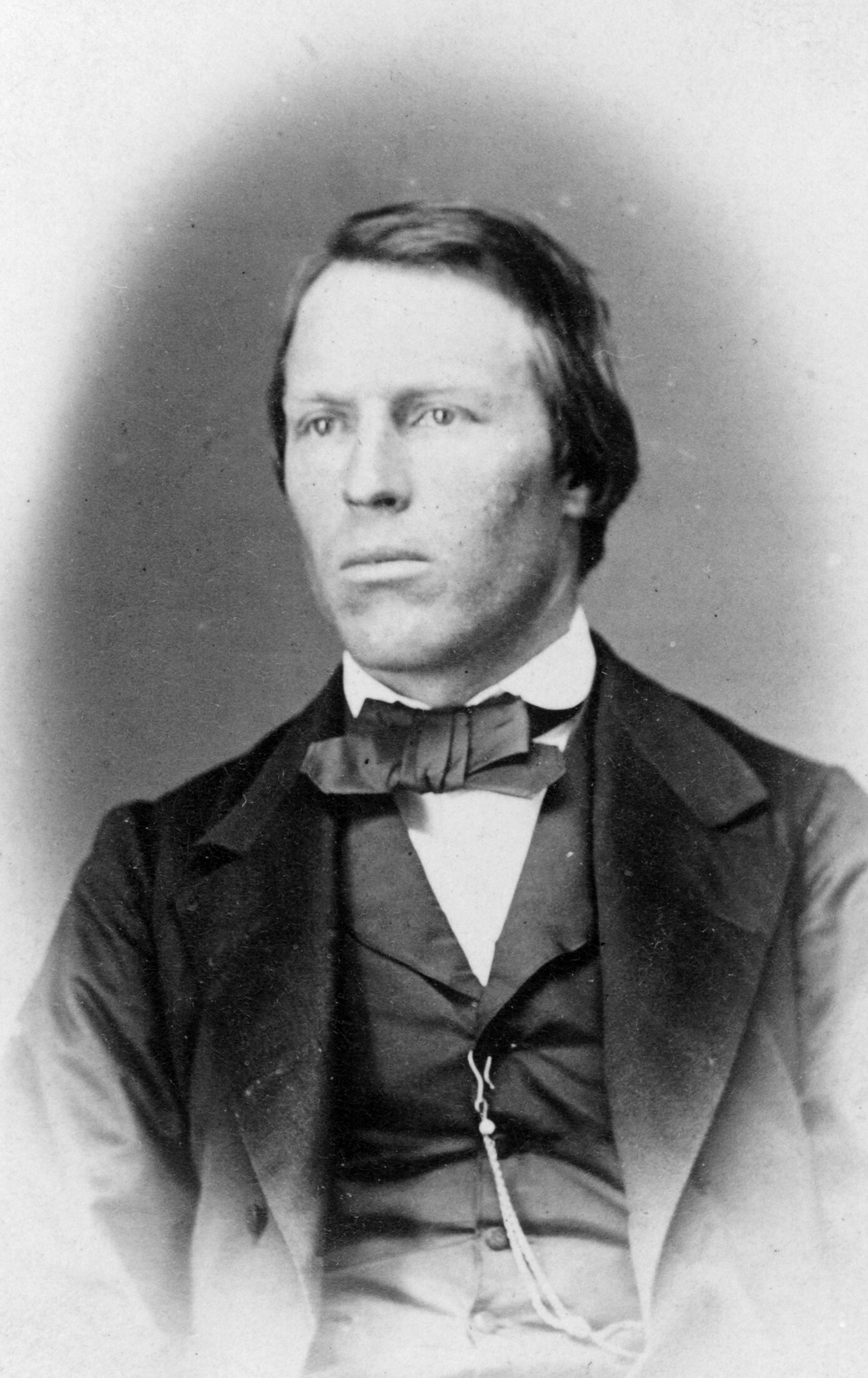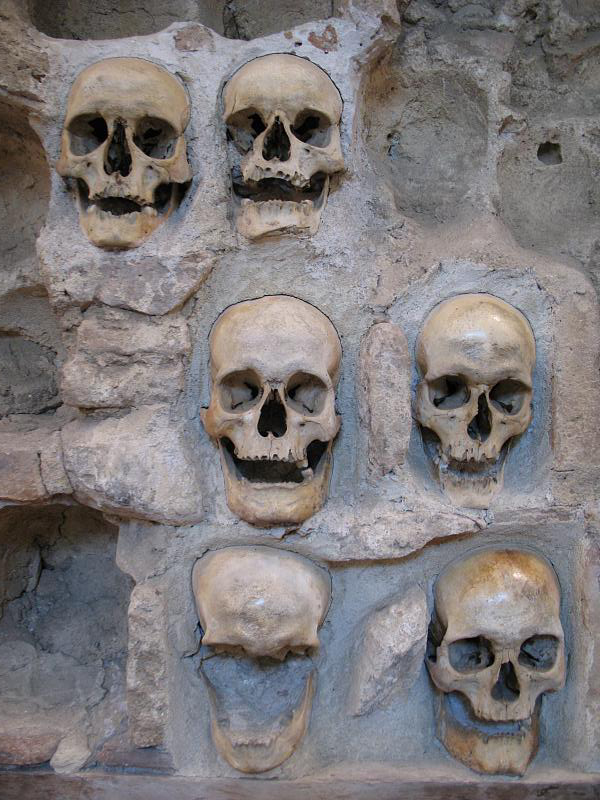Tag: The 1800s
-

William N. Byers – The OHIO and IOWA Years (1831 – 1854)
William Newton Byers, that paragon of pioneer pluck, burst forth from his mother’s womb on February 22, 1831, in West Jefferson, Madison County, Ohio. This wasn’t just any birth – it was a cosmic event that would shape the very fabric of the American West! His parents, Moses Watson Byers and Mary Ann Brandenburg, weren’t your…
-
Catacombs of Saint Gaudiosus
Are you ready for a journey into the macabre underbelly of Naples? Welcome to the Catacombs of San Gaudioso, where the dead don’t just rest – they put on a show! Nestled beneath the bustling Rione Sanità district, these 4th-century catacombs are a veritable playground for the morbidly curious. Here’s what awaits you in this…
-

Skull Tower (Niš, Serbia)
Skull Tower (Ćele kula) is a stone structure embedded with human skulls located in Niš, Serbia. It was constructed by the Ottoman Empire following the Battle of Čegar of May 1809, during the First Serbian Uprising. During the battle, Serbian rebels under the command of Stevan Sinđelić were surrounded by the Ottomans on Čegar Hill, near Niš. Knowing that he and his fighters would be impaled if captured, Sinđelić detonated a…
-

Car of History chariot clock features a life size statue of Clio, the muse of history
A chariot clock is a type of mantel/table figural clock in the form of a chariot whose dial is set into the wheel or elsewhere, its origins date back to the second half of the 16th century southern Germany. Normally of classical mythology subject matter, it has been made in different periods and styles such as Renaissance, Louis XV, Louis XVI, Empire, Napoleon…
-

This guy (1745 – 1821) was a German physician and hygienist who wrote about ‘medical police’…a lot
Johann Peter Frank is considered a pioneer in the field of social hygiene and social medicine as well as public health and the public health service and was one of the founders of hygiene as a university subject. The six-volume (some say six, some say nine) system of a complete medical police is his main work. It took Frank almost four decades to compose it. It was the most comprehensive…
-

Female husbands
A female husband is a person born as a woman, living as a man, who marries a woman. The term was known historically from the 17th Century and was popularised by Henry Fielding who titled his 1746 fictionalised account of the trial of Mary Hamilton The Female Husband. Prosecutions involving women living as men and marrying other women were reported in…
-

Public Universal Friend aka Jemima Wilkinson
The Public Universal Friend (born Jemima Wilkinson; November 29, 1752 – July 1, 1819) was an American preacher born in Cumberland, Rhode Island, to Quaker parents. After suffering a severe illness in 1776, the Friend claimed to have died and been reanimated as a genderless evangelist named the Public Universal Friend, and afterward shunned both birth name and gendered pronouns. In androgynous clothes, the Friend…
-

Institut für Sexualwissenschaft
The Institut für Sexualwissenschaft was an early private sexology research institute in Germany from 1919 to 1933. The name is variously translated as Institute of Sex Research, Institute of Sexology, Institute for Sexology or Institute for the Science of Sexuality. The Institute was a non-profit foundation situated in Tiergarten, Berlin. It was the first sexology research center in the world. The Institute was headed by Magnus Hirschfeld, who since 1897 had run…
-
Xylose is the main building block for the hemicellulose
Xylose is the main building block for the hemicellulose xylan, which comprises about 30% of some plants (birch for example), far less in others (spruce and pine have about 9% xylan). Xylose is otherwise pervasive, being found in the embryos of most edible plants. It was first isolated from wood by Finnish scientist, Koch, in 1881, but first became…
-

What Is Nitrophenol? (besides something mentioned in ‘Scientific Opinion on the re‐evaluation of aspartame as a food additive’)
Nitrophenols are compounds of the formula HOC6H5−x(NO2)x. The conjugate bases are called nitrophenolates. Nitrophenols are more acidic than phenol itself. Wikipedia Mono-nitrophenols with the formula HOC6H4NO2. Three isomeric nitrophenols exist: o-Nitrophenol (2-nitrophenol; OH and NO2 groups are neighboring; CAS number: 88-75-5), a yellow crystalline solid (m.p. 46 °C). m-Nitrophenol (3-nitrophenol, CAS number: 554-84-7), a yellow solid (m.p. 97 °C) and precursor to the…
-

Treatise on the Medicinal Leech – Dr. James Rawlins Johnson, 1816
https://wellcomecollection.org/works/xze7zcta/items?canvas=22
-

Arsenic and Old Leeches
In 1816 Dr. James Rawlins Johnson published his Treatise on the Medicinal Leech. Besides the aforementioned methods of leech use, he studied the leech itself with exacting care. He tested to see if they were cannibals (they were); he froze them with or without salt to see if they would die (snow plus salt was worse).…
NOTES
- 🧬 Disease Table with Low Sodium Connection
- 🧂 Sodium Reduction and Sodium Replacement: A History of Reformulation and Exploding Diseases, Including Many Diseases Unheard of Before Deadly Sodium Policies
- 🧂 The DEADLY 1500 mg Sodium Recommendation predates the WHO’s formal global sodium reduction push by nearly a decade (and it’s even worse than that)
- 🧬 What Is Beta-Glucuronidase?
- When Sugar Was Salt: Crystalline Confusion and the Covenant of Sweetness
Tags
ADAM ASPARTAME Birds Blood Bones Brain Bugs Cancer Columba Cows crystallography Death Death cults Eggs Etymology Gastrin Gold Growth hormone History Hormones Insulin Liver Mere Perplexity Metal Monkey Business Mythology Paracetamol Plants Poison Pregnancy Protein Religion Reproduction Rocks Salt Slavery Snakes Sodium the birds and the bees Thiocyanate Tobacco Tylenol Underworld Venom zinc


